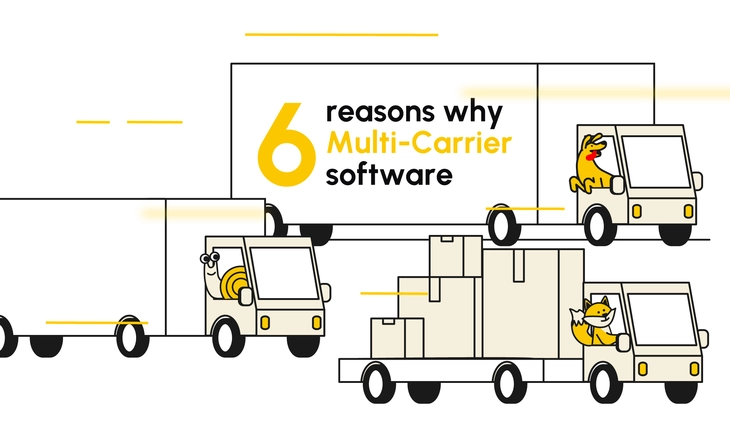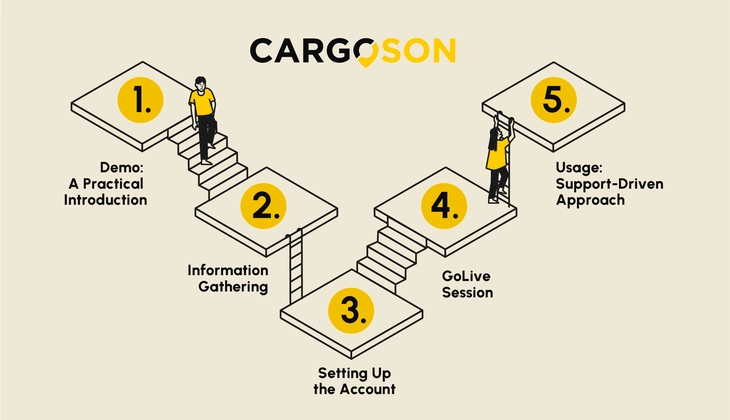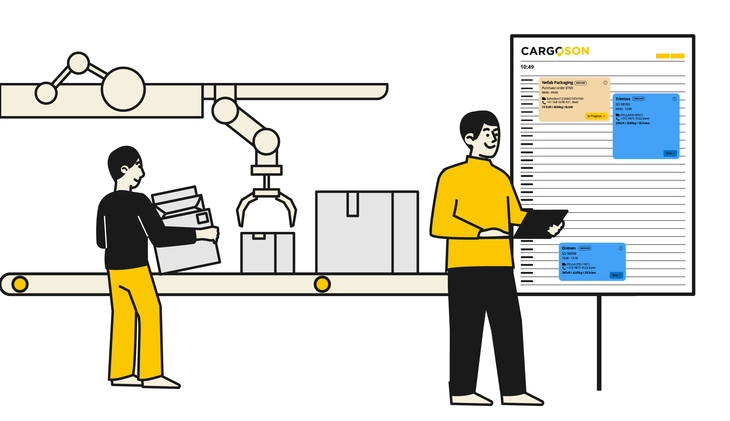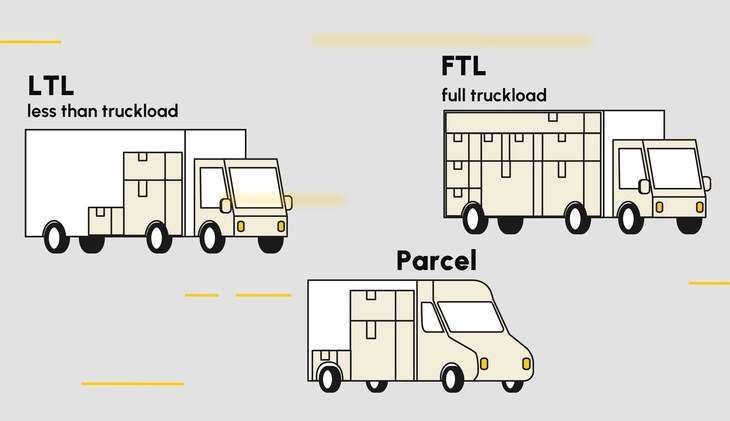Are you considering a multi-carrier shipping software to streamline your shipping operations? With several options available, it can be challenging to find the right solution.
Download the free multi-carrier shipping software checklist
Here are seven key tips to help you choose a suitable multi-carrier shipping software:
Here are seven key tips to help you choose a suitable multi-carrier shipping software:
Tip 1: Identify your shipping requirements
Start by identifying your shipping needs, including the number of shipments, shipping destinations, carriers you use, and the types of products you ship. This will help you evaluate which software options can best meet your needs.
Tip 2: Evaluate carrier API integrations
When selecting a multi-carrier shipping software, evaluate how well it integrates with your existing carriers via EDI or API. Carrier integration software should handle all these for you, but some software options may not integrate well with all carriers, which can lead to issues with shipping and tracking. How easy is it for you to request a new integration? Is it even possible? Does it cost you? If so, how much?
Tip 3: Check reviews about user-friendliness
Consider how easy the software is to use, including features such as setting up shipments, printing labels, and tracking packages. User-friendliness is crucial to ensuring a smooth and efficient shipping process. Useful tools to compare the different shipping software solutions include Capterra, SoftwareAdvice and GetApp.
Tip 4: Review shipping automation capabilities
Automation can save you time and money by simplifying and streamlining your shipping process. Look for a software solution that allows you to automate shipping tasks, such as printing labels and packing slips, shipping notifications for your customers and partners, calculating transport prices, selecting the best carrier for each shipment, updating tracking information etc.
Tip 5: Consider the scope of shipping options (parcels, pallets, freight?)
Keep in mind that many multi-carrier shipping software options offer only parcel shipping, not freight, pallets or larger quantities. If your business requires these types of shipments, make sure the software solution you choose can support them.
Tip 6: Evaluate customer support
When you encounter issues with your software or shipments, you'll want to have reliable customer support available. Look for software options that offer robust customer support, including phone and email support, as well as online resources and user communities.
Tip 7: Consider maintaining direct carrier relationships (flexibility + cost savings)
Many multi-carrier shipping software options act as intermediaries between the customer and the carrier, which can limit your ability to negotiate personal rates and maintain direct carrier relationships. If maintaining these relationships is important for maximizing flexibility and cost savings, choose a software solution that allows you to keep your existing carrier agreements and rates.
In conclusion, choosing the right multi-carrier shipping software can be a daunting task, but by following these tips, you can make an informed decision that meets your business needs. Remember to identify your shipping requirements, evaluate carrier integration, check user-friendliness, review shipping automation capabilities, consider the scope of shipping options offered, and evaluate customer support. Additionally, if maintaining direct relationships with your carriers is important for maximizing flexibility and cost savings, be sure to choose a software solution that allows you to do so.
I created a comprehensive 76-point checklist to base your "homework" on. You can just download it below for free. By taking the time to carefully evaluate your options, you can find a multi-carrier shipping software that helps you save time and money while providing a seamless shipping experience for your customers.
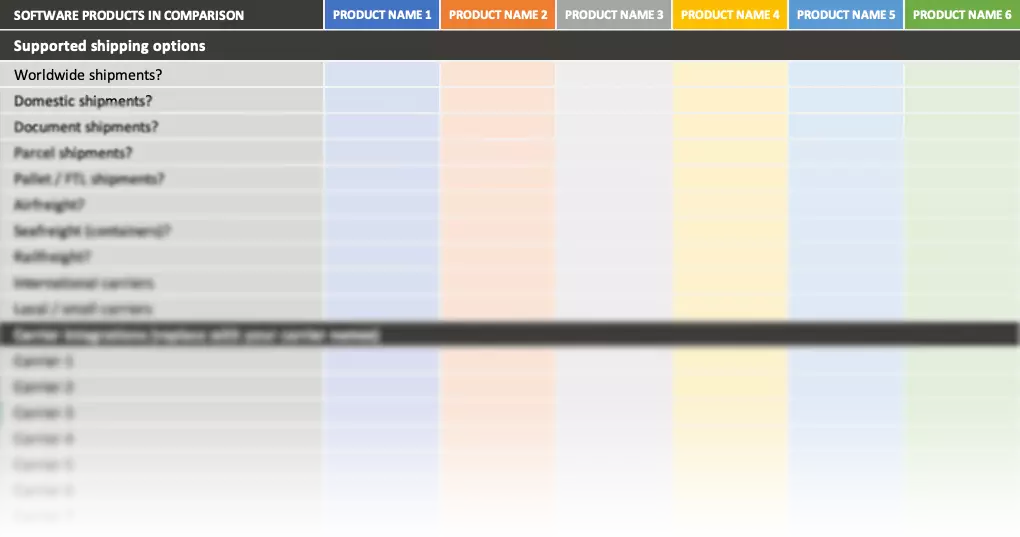
![How to Select a Multi Carrier Shipping Software: 7 Tips [+ free checklist download] How to Select a Multi Carrier Shipping Software: 7 Tips [+ free checklist download]](/rails/active_storage/representations/redirect/eyJfcmFpbHMiOnsibWVzc2FnZSI6IkJBaHBBNlcrQ1E9PSIsImV4cCI6bnVsbCwicHVyIjoiYmxvYl9pZCJ9fQ==--17911efdfb74cab1a073d1c9c536393ecfacf242/eyJfcmFpbHMiOnsibWVzc2FnZSI6IkJBaDdDRG9MWm05eWJXRjBPZ2wzWldKd09oSnlaWE5wZW1WZmRHOWZabWwwV3dkcEFwd0VhUUtvQWpvTVkyOXVkbVZ5ZERzRyIsImV4cCI6bnVsbCwicHVyIjoidmFyaWF0aW9uIn19--10281eab5d8180fcaa878b0a83890b25b0279440/CS_newsroom_Logistics%20ABC_How%20to%20Select%20a%20Multi%20Carrier%20Shipping%20Software.png?locale=en)

![How to Conduct a Simple Transport Tender? [+ free template] How to Conduct a Simple Transport Tender? [+ free template]](https://www.cargoson.com/rails/active_storage/representations/redirect/eyJfcmFpbHMiOnsibWVzc2FnZSI6IkJBaHBBeENsREE9PSIsImV4cCI6bnVsbCwicHVyIjoiYmxvYl9pZCJ9fQ==--0770c20699a76b88a052bbfa35e1ab55beb6d4d8/eyJfcmFpbHMiOnsibWVzc2FnZSI6IkJBaDdDRG9MWm05eWJXRjBPZ2wzWldKd09oSnlaWE5wZW1WZmRHOWZabWwwV3dkcEF0b0NhUUwwQVRvTVkyOXVkbVZ5ZERzRyIsImV4cCI6bnVsbCwicHVyIjoidmFyaWF0aW9uIn19--2c7d6c6b28c4d68db8f7c1f368d1bcdc6ab5275a/how-to-conduct-a-simple-transport-tender-freight-procurement-cargoson.jpg?locale=en)
